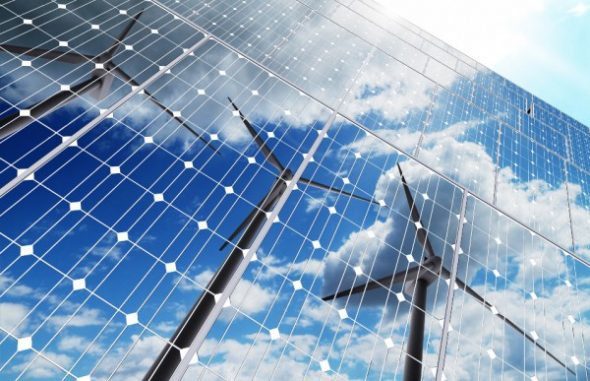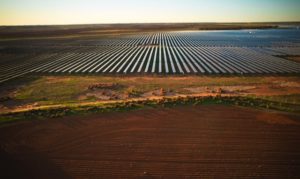In a worrying sign, a major electricity retailer, ERM Power, representing 10% of the market, has opted to pay $123 million in penalties rather than choose to build or contract new wind and solar and surrender 1.9 million large scale certificates to comply with the Renewable Energy Target.
ERM is one of the country’s biggest electricity retailers, and specialises in the business market. Its decision to pay the penalty price is based around its own financial position, and its extensive stock of tax losses, and is the first time a major retailer has chosen penalties over supporting new wind or solar.
The decision brought an instant rebuke from the Clean Energy Regulator, which promised to take action: “We view the intentional failure to surrender certificates as a failure to comply with the spirit of the law and an undermining of the objectives of the scheme,” it said.
John Grimes, head of the Australia Solar Council, said “if ERM Power wants to ‘pay’, rather than ‘play’ – lets help them out … let’s make sure their customers know they are wasting money in this way.”
He also suggested that the penalties paid by ERM should be committed to support for the Australian Renewable Energy agency. “Restoring ARENA funding would mean these funds would still be used to directly fund renewable energy solutions,” he said.
Tristan Edis, lead analyst with Green Energy Markets, says compliance with the RET (there are increasing targets each year culminating in total 33,000GWh by 2020) has historically been tracking above 99%. This figure was backed up by the CER.
However, he warns that penalties – an effective capital strike against renewables – will become increasingly prevalent as a result of the stall in investment in large scale over 2013 to 2015 under former Prime Minister Tony Abbott, when the Coalition pushed to scrap the target altogether. That push is still being made by the Coalition’s far right faction.
“Unfortunately, the Abbott period destroyed investor confidence in renewable energy and supply has not kept up with the target,” Edis says.
“We now see prices for renewable energy certificates at around $88/MWh. We estimate this is around $50 to $60 higher than required to support new renewable energy projects, but they can’t be built fast enough to make up for the lost years under Abbott.”
According to an analysis by Green Energy Markets, there are sufficient LGCs to meet the targets for 2016 and 2017, but they fall short of requirements in 2018. However, GEM notes that other quirks in the market mean ERM and many other retailers will opt to pay penalties before this time.
Power retailers are penalised $65 for every MWh or LGC they fall short of their share of the RET. However, the market has been prepared to pay substantially more for LGCs than this because penalties aren’t a deductible expense for tax purposes.
Spot prices for LGCs have recently been changing hands for around $88. Edis notes that given the 30% tax rate a retailer in a tax paying position would be better off buying a tax deductible LGC for as much as $92 rather than paying the $65 penalty. But it turns out ERM and some other retailers aren’t in a tax paying position.
“At the end of April ERM were holding 190,663 LGCs while their RET liability for 2016, due this February, is close to two million LGCs. Instead of seeing their LGC holdings go up they went down. By the end of June they stood at 169,724, then they fell dramatically by the end of October to just 11,787.“
After reviewing financial returns, Green Energy Markets found ERM had significant accumulated tax losses.
“This meant they were financially better off paying the non-tax deductible penalty of $65 rather than buying LGCs at a spot market price of around $88.“
In a statement announcing its intention to pay the LGC shortfall, ERM noted the differential between the non-tax deductible shortfall cost of $65/LGC and a market price of over $90/LGC.
“By electing to pay the shortfall charge of $65 per certificate in place of surrendering 1.9 million LGCs, ERM Power has adopted an approach which accelerates the utilisation of tax losses and preserves the right to purchase and surrender certificates for 2016 within the prescribed three – year window,” it wrote.
“The impact is an incremental tax charge of $37m which is recognised at 31 December 2016. A consequence of this strategy is that franking credits are made available for future dividends.”
The decision has potentially significant implications for ERM customers, who will now be paying money to the government rather than renewable energy. For many, this could have reputational issues and could lead some to consider investing in their own renewable power, as even large energy users such as Sun Metals are doing.
Edis notes that many of the leading retailers, including giants Energy Australia and Origin Energy, are likely to find themselves in a similar position.
“ERM is going to be in this [tax] position next year too we suspect. Others are probably going to be in this position going forward. A whole heap of other smaller retailers not in a tax paying position.”
“A huge part of the market is not in a tax paying position, and LGCs are at almost $90 instead of $65.”











